When the spotlight of the Qatar World Cup illuminated the glassware in the VIP box of the stadium, and when the transparent wine glasses were placed on the table of the G20 Summit state banquet, behind these stunning glass decorations that have wowed the world lies a map of Chinese production regions spanning a millennium. From the flames of furnace temples in the Ming and Qing dynasties to the data streams in modern 5G workshops, different regions have written legends of glass and fire with their unique codes.
I. Northern Heavyweights: The Contemporary Rebirth of Millennia-Old Craftsmanship
1. Qi County, Shanxi: The “Blown” Glass Capital of the World
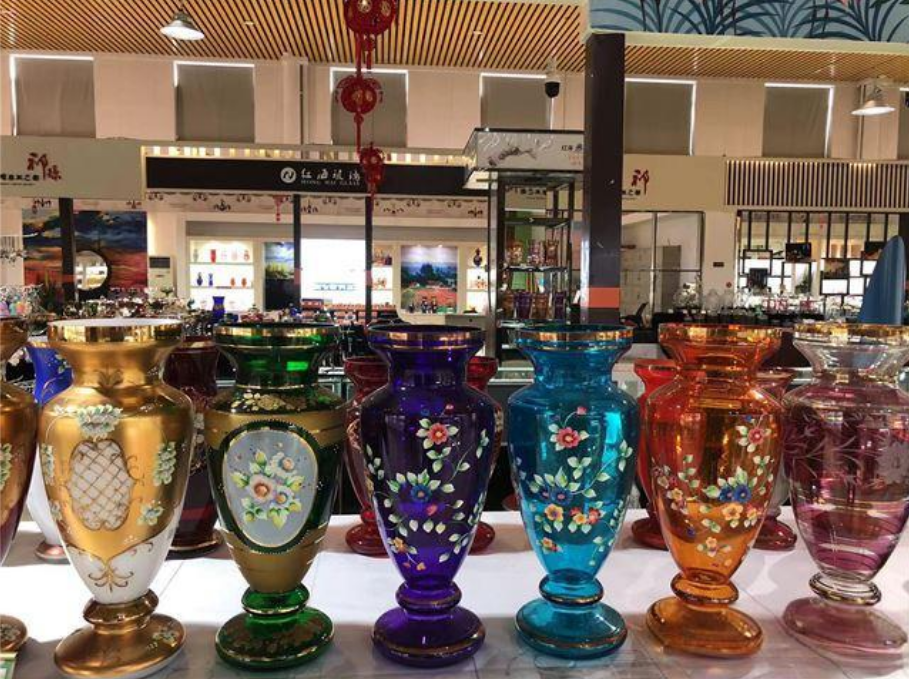
More than 300 years ago, Shanxi merchants brought back not only business opportunities along the “Ten-Thousand-Li Tea Road” but also a craft that would change the fate of this small county — hand-blown glass. Today, this small county with a population of only 249,000 undertakes over 60% of the national production of hand-blown glassware. With a single blowing pipe, 30,000 practitioners send 260,000 tons of glass products to more than 80 countries and regions around the world.
In the exhibition hall of Shanxi Dahua Glass, over 6,000 varieties of glass products are dazzling: from handcrafted goblets priced at 3,000 RMB to the “Kairos” series certified as a light luxury brand, all testifying to the transformation of Qi County’s glass industry from “small village workshops” to a “large-scale base covering 330,000 square meters”. More notably, the National Glassware Product Quality Supervision and Inspection Center settled here in 2019, giving this small county a say in setting industry standards.
2. Boshan, Shandong: A 600-Year Legend of the “Colored Glaze Hometown”
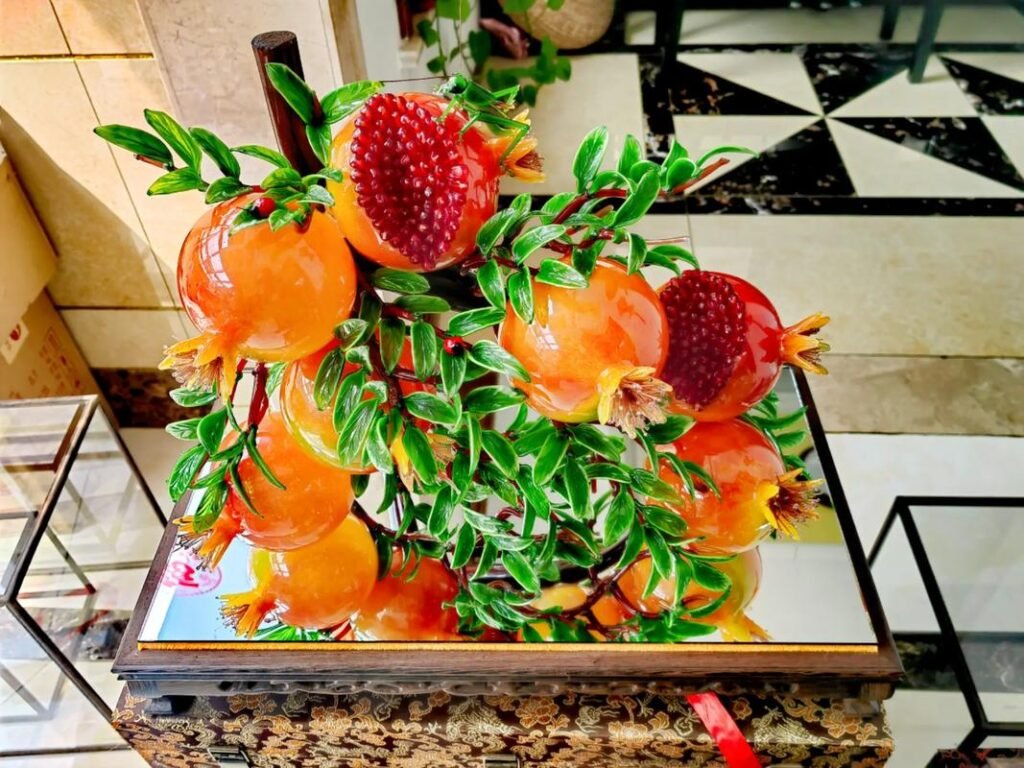
The industry saying “China’s glass looks to Zibo, and Zibo’s glass looks to Boshan” reflects the industrial foundation of this place dating back to the Ming Dynasty. The Furnace Temple by the Xiaofu River, built during the Wanli period, enshrines Nüwa, revered by furnace craftsmen as their patron saint, and has witnessed the ancient craft of “using crystal and blending with indigo” here. In the Qing Dynasty, Boshan had already become a national glass hub. During the Guangxu period, it exported over 7,000 dan (a traditional Chinese unit of weight, approximately 50 kilograms per dan) of glass decorations such as jade-like pendants and prayer beads annually, with products even reaching Southeast Asia and the Americas.
As the birthplace of China’s glass industry, Boshan has created many “firsts”: the country’s first official glass factory was established here in 1904, and now it produces the first sheet of ultra-white glass and TCO conductive film glass. Guided by the innovative concept of “Glass +”, this “hometown of colored glaze” continues its 600-year glory with a complete industrial chain.
3. Shahe, Hebei: An Industrial Highland for “Glass Blanks”
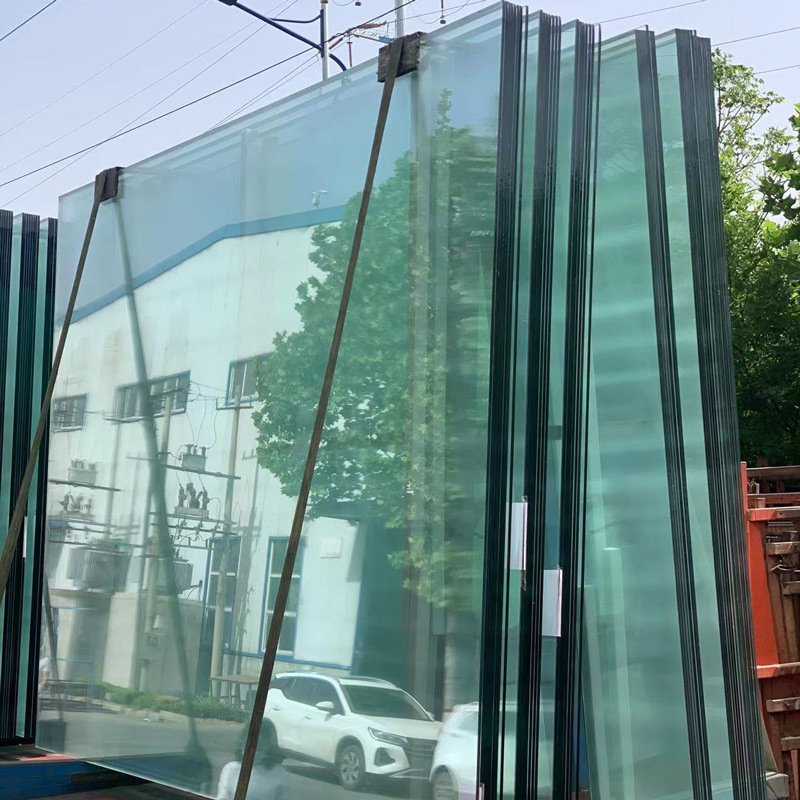
In the southern part of the North China Plain, Shahe, Hebei, has become an indispensable force in China’s glass industry map, thanks to its unique high-quality quartz sand resources. The quartz sand here has a purity of up to 99.8%, making it a core raw material for producing high-quality glass. Since the 1980s, Shahe has gradually developed into one of the largest flat glass production bases in China and now occupies a key upstream position in the glass decoration sector.
Today, Shahe is no longer just a single glass blank production area but has formed a complete chain of “glass blanks – deep processing – decorations”. Local enterprises transform ordinary glass into popular products such as European-style carved candlesticks and minimalist glass pendants through processes like coating, engraving, and splicing. The annual output of deep-processed glass exceeds 30 million square meters, with products not only supplying the domestic home decoration market but also being exported to the Middle East, Europe, and other regions via Tianjin Port. More notably, relying on the industrial cluster advantage of the “China Glass City”, Shahe has attracted over 200 upstream and downstream enterprises to settle in, forming a “one-stop” industrial ecosystem from raw material mining to finished product sales. This has significantly reduced the production cost of glass decorations, making Shahe an important production base for cost-effective products.
II. Southern Rising Stars: Innovative Expressions of Characteristic Crafts
1. Fengyang, Anhui: A New Chapter of Glass in the “Hometown of Emperors”
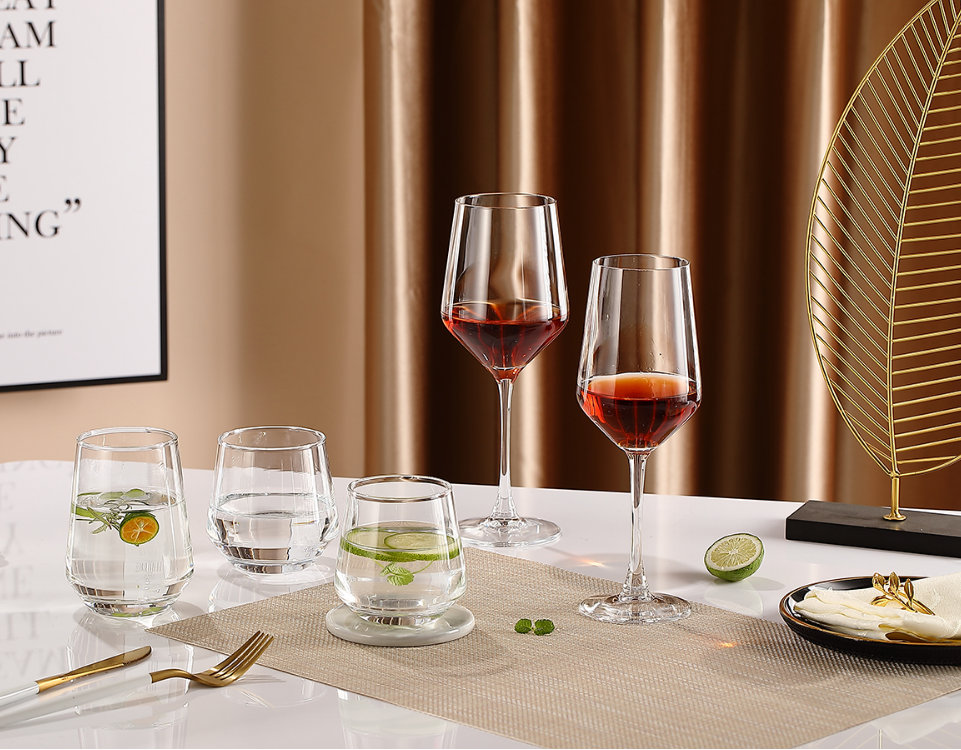
When mentioning Fengyang, Anhui, people first think of its historical label as the “hometown of the Ming Dynasty emperors”. Today, it has gained another title – “China’s Daily-Use Glass Industry Base”. Leveraging quartz sand resources similar to those in Shahe, Fengyang has focused on developing the glass industry since the early 21st century. In just 20 years, it has formed an industrial cluster dominated by glassware and decorations. Currently, there are over 80 glass enterprises in Fengyang, including 32 large-scale enterprises, with an annual output of 800,000 tons of various glass products.
The characteristic of Fengyang’s glass decorations lies in the “integration of practicality and aesthetics”. Leading local enterprises such as Deli Co., Ltd. integrate traditional ink wash elements into glass design. Their “Ink Wash Qingyun” series of glass cups and vases have become bestsellers in the home decoration market due to their elegant patterns and transparent texture. Meanwhile, Fengyang also focuses on the festive decoration field. Its developed Christmas glass baubles and Chinese New Year zodiac glass ornaments have achieved an annual export volume of over 50 million pieces, sold to more than 30 countries in Europe and America, thanks to their accurate market positioning. In addition, Fengyang has established a Glass Industry Research Institute and collaborated with universities such as Hefei University of Technology to develop environmentally friendly glass materials, endowing the glass industry in this “hometown of emperors” with both traditional charm and green genes.
2. Pujiang, Zhejiang: An Art Palace of “Crystal Glass”
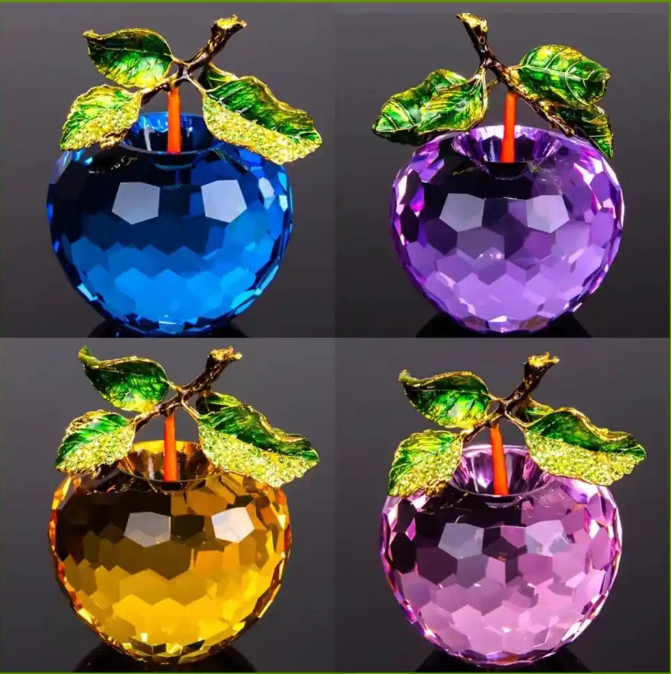
If northern production regions excel in scale and history, then Pujiang, Zhejiang, stands out in the glass decoration sector with its exquisite “crystal glass” craftsmanship. Known as the “Hometown of Crystal in China”, Pujiang’s crystal glass processing craft can be traced back to the late Qing Dynasty. At that time, local craftsmen would polish crystal raw stones into bead strings and ornaments, which were used as decorations for weddings and festivals.
Today, Pujiang has become the world’s largest production base for crystal glass crafts. The county has over 2,000 crystal-related enterprises, with more than 100,000 employees, and an annual output of 120 million crystal glass decorations. The core competitiveness of its products lies in “exquisite craftsmanship”: from crystal glass screens that take months to carve, to crystal chandelier parts inlaid with broken diamonds, and to small and delicate crystal mobile phone pendants, each piece embodies the ingenuity of craftsmen. Pujiang has also innovatively launched the “Crystal + Culture” model, integrating the techniques of Dongyang wood carving and Qingtian stone carving into crystal carving. Its “Landscape Art” crystal ornaments have even been presented as national gifts to foreign dignitaries. The annual China Crystal Glass Industry Expo attracts buyers from over 20 countries around the world, bringing Pujiang’s crystal glass decorations to the global stage.
III. Historical Context: From Imperial Workshops to Folk Soil
The distribution of China’s glass decoration production regions has always been marked by the imprint of the times. The blowing technology mastered in the Northern Wei Dynasty gave birth to exquisite glass sarira bottles in the Sui and Tang dynasties; in the Song Dynasty, gourd-shaped bottles became popular folk glass decorations, while imported Islamic glassware appeared in Liao Dynasty tombs.
The Qing Dynasty witnessed the golden age of the glass industry: the Workshop of the Heart-Nourishing Hall in the Forbidden City gathered craftsmen from Boshan and Guangzhou, who integrated Western technology to create treasures such as gold-star glass and colored glass. The “Guyuexuan” snuff bottles became classic heirlooms. At the same time, folk workshops in Boshan, Guangzhou, Suzhou, and other places flourished. Glass bead decorations were exported overseas via the Maritime Silk Road, and even gained popularity among Native Americans. This pattern of “parallel development of imperial exquisite products and folk popular products” laid the foundation for the distribution of contemporary production regions.
IV. Industrial Upgrading: The Breakthrough Path of Traditional Production Regions
Today’s glass production regions are no longer synonymous with “handicraft workshops”. Through the model of “specialized town + market entities”, Qi County has integrated over 200 scattered enterprises into 62 core enterprises, with more than 230 supporting upstream and downstream manufacturers, forming a complete industrial chain from mold manufacturing to hand-painted firing. 5G intelligent production lines have been implemented here, with sensors monitoring temperature parameters in real time, significantly improving the yield rate. The Glass Industry College jointly established with Jinzhong University is cultivating a new generation of inheritors for the industry.
Shahe has enhanced its competitiveness through “green transformation”. Local enterprises have invested over 2 billion RMB in upgrading production lines, promoting the use of natural gas instead of coal for heating. This has reduced glass production energy consumption by 15% and pollutant emissions by 80%, not only adhering to the ecological red line but also improving product quality. Pujiang has built a “Digital Crystal” platform. Through technologies such as 3D modeling and online customization, customers can design their exclusive crystal decorations without leaving home, shortening the order response time from 15 days to 3 days and greatly enhancing market competitiveness.
From the change of Qi County’s booth at the Canton Fair from “one and a half corner booths” to tens of booths in the main passage, and from a single type of vase to a rich variety of 6,000 products, the stories of Qi County, Boshan, Shahe, Fengyang, and Pujiang prove that the vitality of traditional production regions lies in both preserving the roots of “blowing pipe craftsmanship” and “crystal carving” and embracing the trends of “digital transformation” and “green development”.
Conclusion: The Chinese Warmth in Glass
A piece of glass undergoes more than 20 processes from its molten state to a finished decoration. Just like the blowing pipe in the hands of Yan Zhijun, a craftsman from Qi County, over 40 years, it has not only created exquisite utensils but also warmed a family’s life – the change from a daily wage of 6 RMB to 300 RMB is a vivid example of the vitality of production regions. Meanwhile, Master Li, a crystal craftsman from Pujiang, used a carving knife to depict the “Thousand-Li Rivers and Mountains” on crystal, reviving traditional aesthetics in glass.
When we look at a glass decoration, what we see is not only its transparent luster but also the historical heritage and contemporary resilience of different production regions. Whether it is the scale and profoundness of the north or the exquisiteness and innovation of the south, this glass fire that has been burning for a millennium continues to write new legends on the land of China.

